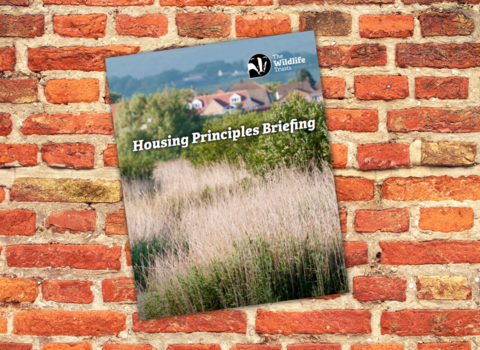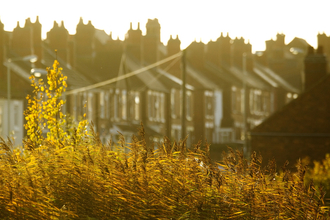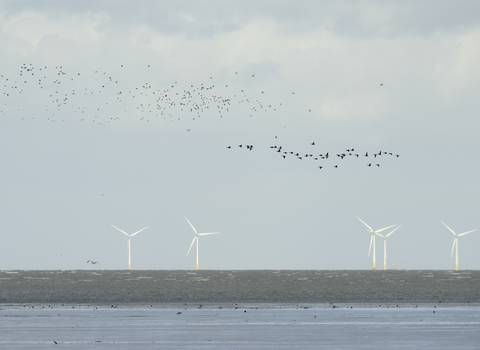The impact of development on wildlife
Development must not come at the expense of addressing the nature crisis and should seek to deliver win-wins for people, wildlife and climate. All development, be it housing, commercial or infrastructure must be designed and delivered in a way that contributes to nature’s recovery, not its decline.
Planning for development and nature
The UK Government is undertaking the biggest drive for housebuilding and green energy in 70 years. Done badly this could cause huge, irreversible damage to wildlife and wild places. We are seeing the loss of irreplaceable ancient woodlands, wildflower meadows, wetlands and other rare habitats due to development happening in the wrong place. This makes it more difficult to address the nature and climate crisis. At the same time, people living in urban areas are increasingly cut off from the natural world, to the detriment of their health and wellbeing. But this does not need to happen. We need to plan for nature in the same way that we plan for built development and ensure development contributes to this plan for nature.
What The Wildlife Trusts are doing
The Wildlife Trusts work with national and local government, businesses and local communities to influence planning and development to achieve better outcomes for wildlife. The Wildlife Trusts respond to around 6,500 planning applications per year, and tens of thousands more are vetted and checked for impacts on wildlife.
Housing
It is essential to ensure that everyone has a home. And people’s homes must give them the opportunity to have a good quality of life. This means giving people daily access to nature which we know is essential for people’s mental and physical health. It means considering how homes will be affected by a changing climate and building features that protect people from the impacts. It also means ensuring homes reduce energy and water use to that they are part of the solution.
But there is a worsening housing crisis. The calls for many more houses to be built have increased the pressure on nature but have not solved the housing problem. We do not think it is necessary to choose between housing and nature. We believe it is possible to provide the homes people need and make space for nature too.
We discuss these issues in our briefing on housing. This sets out principles for home-building which will actively contribute to reducing climate impacts, help nature to recover and tackle health inequalities.
National infrastructure, including transport
The infrastructure that supports society: transport, communications, energy and green infrastructure, should be planned, delivered and maintained in a sustainable way that minimises the contribution to climate change and delivers a net gain for wildlife.
Climate change is probably the greatest long-term threat to biodiversity, and the majority of Britain’s greenhouse gas emissions now come from transport, according to government figures. We need to move towards sustainable transport solutions and renewable energy supplies, but it is essential that these do not increase negative impacts on the environment.
Doing this will require the UK Government to look in an integrated way at how we use land – to grow food, to provide energy, for new homes, and to help us move from a to b, and as a home for wildlife in a Land Use Framework. We believe that a strategic approach to planning and development can mean that important habitats are protected and even enhanced, alongside development.
A Nature Recovery Network
We work to influence the policy that sets the rules which govern where and how development happens. This means providing advice to government on how to ensure local planning authorities have the right tools available to set strong policies to protect, restore and enhance wildlife. Then working at a local level to provide advice that helps this to happen.
We are promoting a new designation: ‘wildbelt’ to protect the space nature needs to recover. Working alongside Local Nature Recovery Strategies, tools, which show the Nature Recovery Network at a county level, this will allow development to be located in areas which are less important for nature. It can be used to target activity that will contribute to enhancing biodiversity.
Alongside this we are working to influence government strategies to ensure that development delivers an overall improvement in the natural world (a 'net biodiversity gain').
Planning development
Development can cause serious harm to wildlife but it does not have to. Development can also deliver valuable biodiversity enhancement. Influencing a planning proposal is as much about promoting positive outcomes as it is about fighting harmful proposals.
In general, the earlier you can get involved, the better the outcomes for nature. This means getting involved when councils are developing their local and strategic plans, before a planning application is submitted.
What you can do
-
Find out when your local authority is consulting on its Local Plan. Insist on strong policies to protect wildlife. ,
-
Respond to consultations and ask for new wildlife habitat to be created as part of major developments.
-
Find out if your parish or town is putting together a Neighbourhood Plan. You can seek the creation of new wildlife-rich green space as part of the plan, or protect existing natural areas. See our forward planning factsheet below.
-
Respond to planning applications you think could damage wildlife, or have the potential to create more areas for wildlife. Let your local councillors and those on the planning committee know why you are objecting.
-
Make a note of animals and plants that are present in your local area and tell the data centre.







